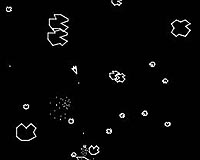 |
Bethesda MD (SPX) Jul 13, 2009 Since the February 10, 2009 collision of Iridium 33 and Cosmos 2251, the Department of Defense has begun to ramp-up its efforts to warn satellite operators of high-risk, close approaches by debris and other satellites. The latest population estimates of maneuverable spacecraft are as high as 800. However, since all operators do not report on satellite status, some fraction of these may no longer be operational. A more conservative estimate might be 700 operating satellites, of which approximately 300 to 400 may be capable of expending propellant to avoid a potential collision, if given early enough warning. In the case of geostationary platforms, large quantities of propellant are carried for regularly scheduled stationkeeping maneuvers. At such high altitudes relative speeds between active satellites and expired vehicles and other debris are low compared to those at low altitude. Nevertheless, tracking accuracies are not precise enough to predict collision events with great certainty. Whenever a geostationary satellite operator receives a close-approach warning, a decision must be made to either activate an avoidance maneuver or do nothing. It turns out that doing nothing is probably as safe as maneuvering, because the predicted probability of collision is typically between one-in-a-thousand and one-in-one-hundred-thousand, with a probable distance of closest approach in the several kilometer range. So, it is conceivable that an avoidance maneuver may, in fact, move the satellite closer to the debris. The situation in low orbits is worse. Satellite speeds are much higher and there are many more satellites and debris objects. Closing speeds can approach 15 km/sec. Warning times are much shorter and very few satellites can maneuver to avoid debris encounters. This situation is somewhat like that of the Titanic. The iceberg was sighted several minutes before the collision, but the ship could not maneuver out of the way. There was a good deal of "yelling and screaming," but little could be done. The technology for early iceberg detection simply was not available in 1912. Well, the tracking and prediction technology for accurately predicting satellite-debris events is simply not available in 2009, and no one knows when satellite operators will have it. What is the current state of technology? Judging from recent events and statements by the experts, we are at the "yelling and screaming" stage. The field known as conjunction analysis has come a long way in recent years, but the orbiting object tracking data and perturbation modeling capabilities remain limited in terms of accuracy. In response to the February collision event, the Air Force's Joint Space Operations Center (JSPOC) has increased the number of satellites it monitors for possible collisions from roughly 140 to more than 300. Plans call for continued expansion of such activities in order to monitor up to 1,300 satellites. How does this relieve the collision risk issues? In almost all cases of predicted close encounters, avoidance attempts do not relieve the risks. The reasons are simple. Current close encounter predictions lack the needed accuracy to be sure that maneuvering will help in most situations. Most low orbiting spacecraft cannot maneuver, or cannot react quickly to warnings. Operators that can maneuver their spacecraft are reluctant to do so, because on-board propellant is very limited. JSPOC is tracking some 19,000 objects, making continuous tracking impossible and periodic checks of orbit parameters precludes highly accurate state vector predictions. For many ground station personnel who operate satellites, the situation is getting to be like that of Allied bomber crews flying over Europe during World War II: long periods of boredom, interrupted by moments of stark terror. Share This Article With Planet Earth
Related Links Launchspace Space Technology News - Applications and Research
 More Trash Talk
More Trash TalkBethesda MD (SPX) Jul 09, 2009 Launchspace has been studying the space debris issue with an eye toward private sector participation. After all, we cannot expect world governments to willingly contribute to debris reduction until they have to. No agency of a space-faring nation will want to commit huge amounts of funding to the removal of space objects. These agencies are only interested in placing satellites in orbit in ... read more |
|
| The content herein, unless otherwise known to be public domain, are Copyright 1995-2009 - SpaceDaily. AFP and UPI Wire Stories are copyright Agence France-Presse and United Press International. ESA Portal Reports are copyright European Space Agency. All NASA sourced material is public domain. Additional copyrights may apply in whole or part to other bona fide parties. Advertising does not imply endorsement,agreement or approval of any opinions, statements or information provided by SpaceDaily on any Web page published or hosted by SpaceDaily. Privacy Statement |